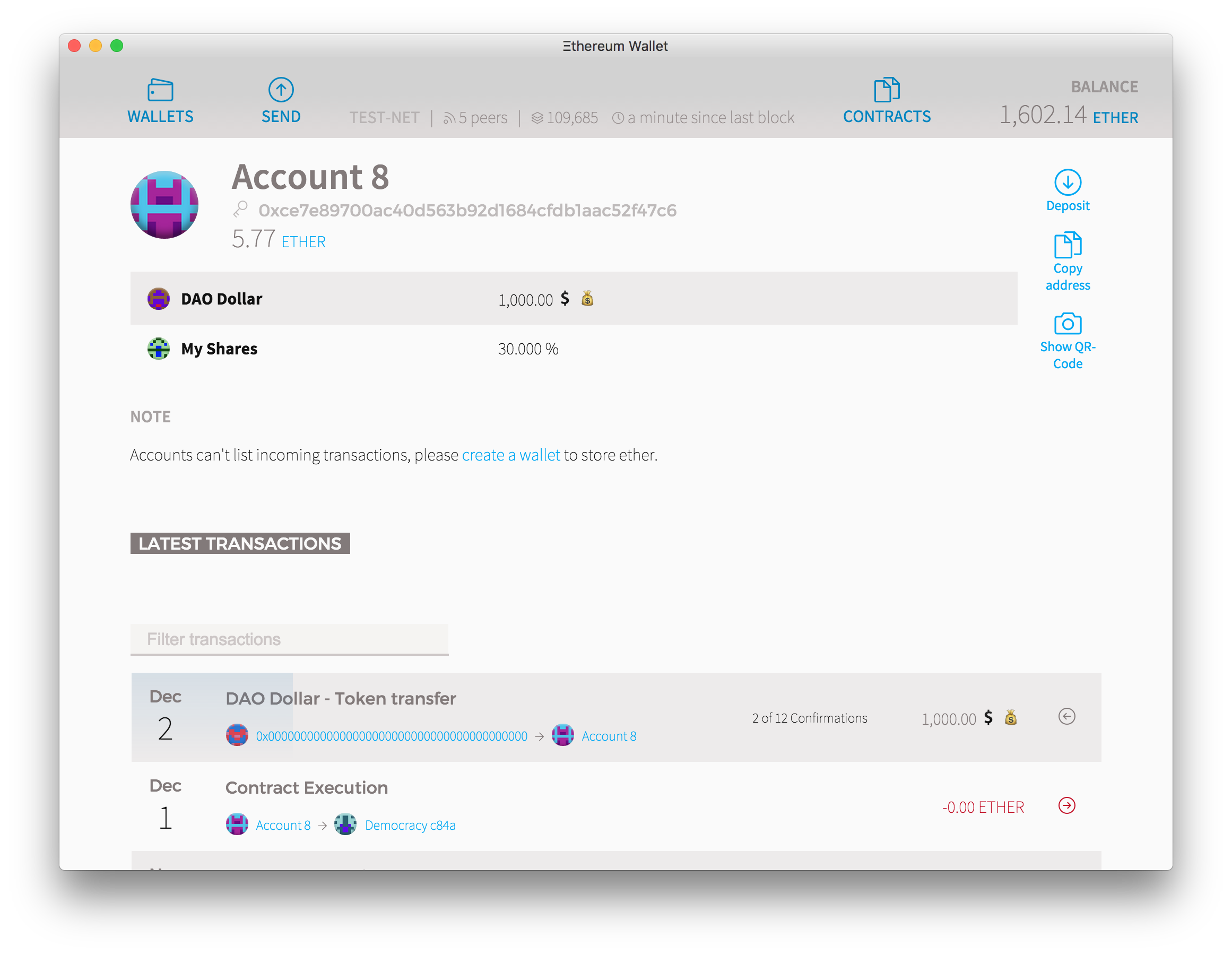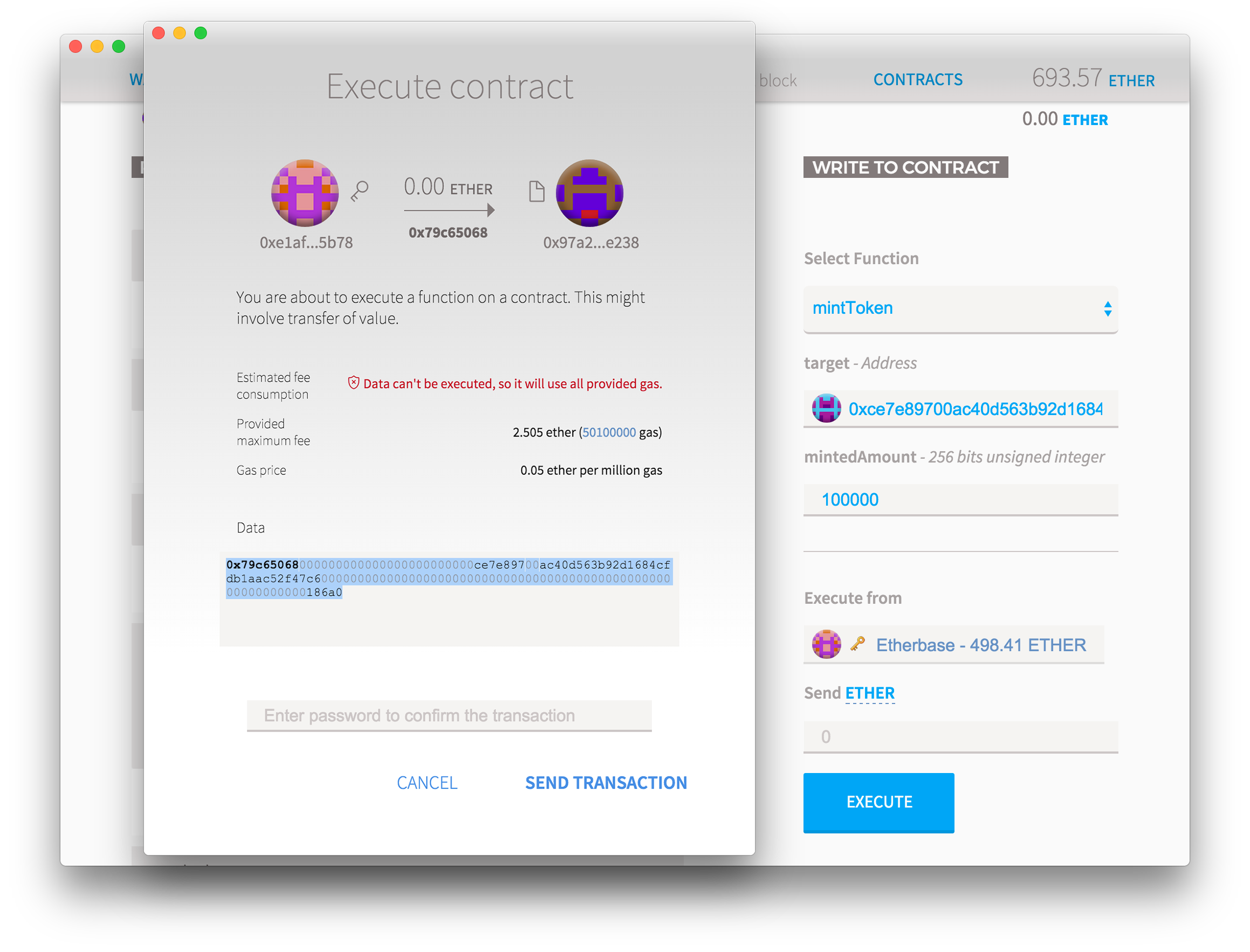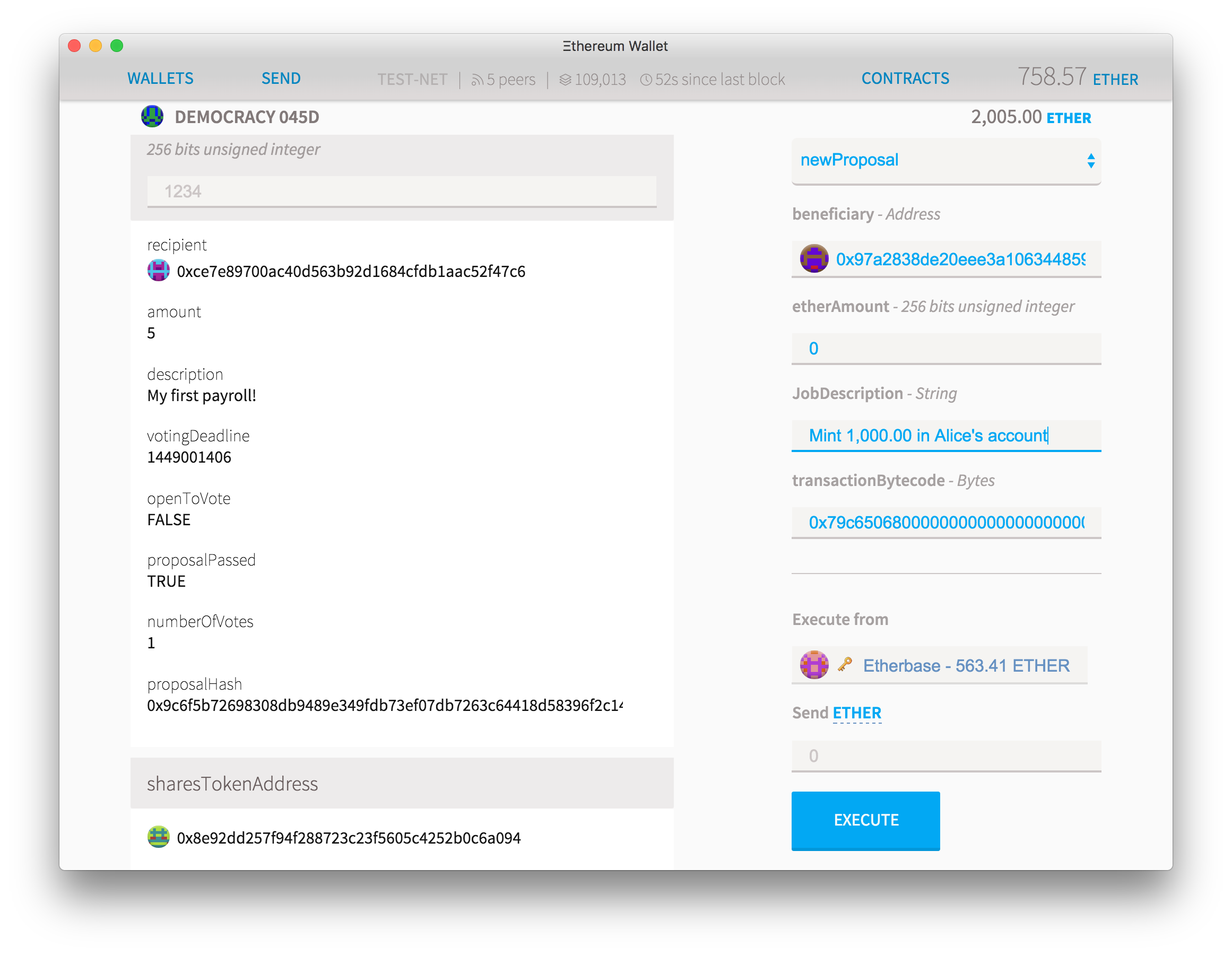That is the third and remaining put up on a collection on use the Ethereum Pockets to create your personal autonomous organisations. On the first post we detailed how to create a token, and on the second we shown how to generate a digital democracy controlled by these tokens. Now we are going to do the total circle and create a token managed by the Organisation!
We’re going to modify the token contract to permit it to be minted by your DAO. So save the deal with of your present DAO in a notice pad (take note of the icon) and grab this source code and you understand the drill: contracts > deploy new contract > solidity supply code > decide contract
You may fill the parameters any means you need (sure, emojis are permitted on the string fields) however you will discover one new subject that did not exist earlier than: Central Minter. Right here add the deal with of your newly created democracy contract.
Click on Deploy and let’s await the transaction to be picked up. After it has a minimum of two confirmations, go to your democracy contract and you may discover that now it owns 1,000,000 of your new cash. Now for those who go to the Contracts tab you will see that there’s a new DAO greenback (admin web page) contract in your assortment.
Choose the “mintToken” operate to your proper after which put any deal with you personal because the “goal”, after which the quantity of latest mints you wish to create from skinny air of their account. Press “execute” however do not press ship! You may discover that there’s a warning saying that the transaction cannot be executed. This occurs as a result of solely the Minter (which is presently set to the DAO deal with) can name that operate and you might be calling it together with your major account. However the calling code is similar, which is why you possibly can merely copy it.
As a substitute, copy the contract execution code from the “knowledge” subject and put it apart on a notepad. Additionally get the deal with of your new “Mint” contract and put it aside someplace.
Now return to the democracy contract and create a brand new proposal with these parameters:
- Because the beneficiary, put the deal with of your new token
- Depart etherAmount clean
- On the jobDescription simply write a small description that you’re minting new cash
- On the transactionBytecode, paste the bytecode you saved from the information subject on the earlier step
In a couple of seconds it’s best to be capable of see that the small print on the proposal. In contrast to the opposite fields, transactionBytecode might be extraordinarily prolonged and due to this fact costly to retailer on the blockchain. So as an alternative of archiving it, the particular person executing the decision later will present the bytecode.
However that after all creates a safety gap: how can a proposal be voted with out the precise code being there? And what prevents a consumer from executing a distinct code after the proposal has been voted on? That is why we maintain the hash of the bytecode. Scroll a bit on the “learn from contract” operate listing and you may see a proposal checker operate, the place anybody can put all of the operate parameters and verify in the event that they match the one being voted on. This additionally ensures that proposals do not get executed until the hash of the bytecode matches precisely the one on the offered code.

It’s an older code, but it checks out
Now everybody can vote on the proposal and after the voting interval has handed, anybody with the right bytecode can ask the votes to be tallied up and the contract to be executed. If the proposal has sufficient help then the newly minted cash ought to seem on Alice’s account, as if it was a switch from deal with Zero.
 Why a switch from deal with zero? As a result of doing the alternative, sending a coin to 0x00 is a option to successfully destroy it, however extra importantly, as a result of it says so on the contract code. You may change that as you desire.
Why a switch from deal with zero? As a result of doing the alternative, sending a coin to 0x00 is a option to successfully destroy it, however extra importantly, as a result of it says so on the contract code. You may change that as you desire.
And now you’ve a central minter contract that exists solely on the blockchain, completelly fraud-proof as all their actions are logged transparently. The mint can even take cash from circulation by merely sending the cash it has to handle Zero, or by freezing the funds on any account, however it’s mathematically unattainable for the Mint to do any of these actions or generate extra cash with out the help of sufficient shareholders of the mint.
Doable makes use of of this DAO:
- The creation of a common steady crypto forex. By controlling the full quantity of cash in circulation the Mint shareholders can try to create an asset whose worth does not fluctuate too wildly.
- Issuance of certificates of backed property: the cash can characterize an exterior forex or gadgets that the Mint owns and may show to it is shareholders and token holders. When the Mint acquires or sells extra of those property it might probably burn or generate extra property to ensure that their digital stock will all the time match their actual counterpart
- Digitally backed property. The Mint can maintain ether or different ethereum primarily based digital currencies and use that to again the worth of the currencies circulating
Enhancements Options
There are a number of ways in which this construction might be but improved, however we are going to go away it as an train and problem to the reader:
- Proper now votes are made by shareholders primarily based on freely tradable tokens. Can as an alternative membership be primarily based on invitation, every member getting a single vote (or perhaps use quadratic voting or liquid democracy)?
- What about different voting mechanisms? Possibly the vote as an alternative of being a boolean might be a extra versatile association: you could possibly vote to postpone the choice, or you may make a vote that’s impartial however nonetheless rely to the quorum
- At the moment all proposals have the identical debating interval. Are you able to make that proportional to the worth switch being proposed? How would you calculate that to tokens?
- Are you able to create a greater token that may be mechanically created by sending ether into it, which might then be retrieved by burning the token, at a fluctuating market worth?
- What else can the DAO personal or do, apart from tokens?


